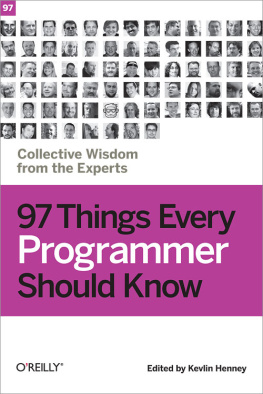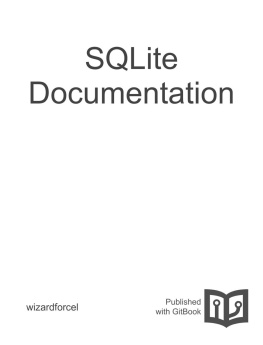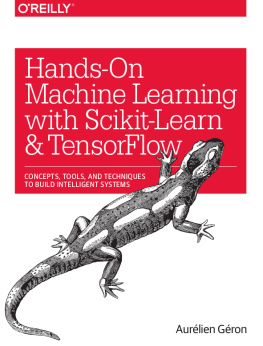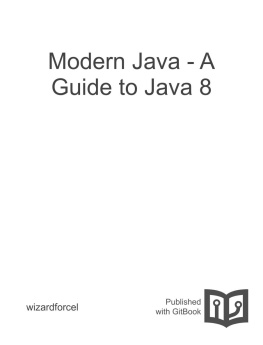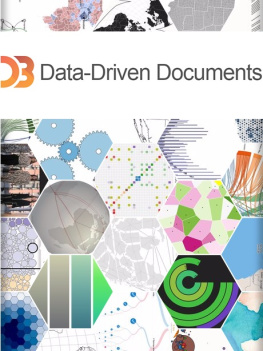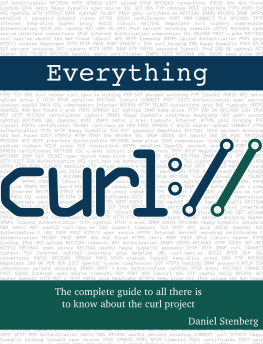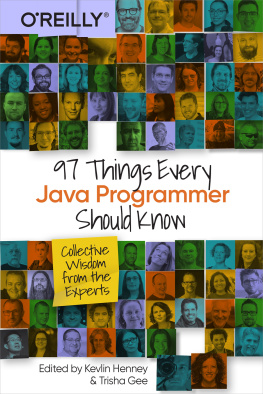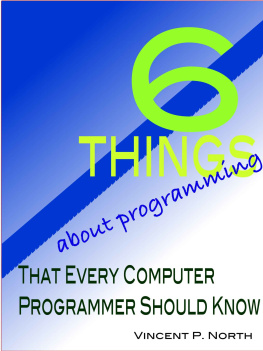it-ebooks - 97 Things Every Programmer Should Know
Here you can read online it-ebooks - 97 Things Every Programmer Should Know full text of the book (entire story) in english for free. Download pdf and epub, get meaning, cover and reviews about this ebook. year: 2018, publisher: iBooker it-ebooks, genre: Computer. Description of the work, (preface) as well as reviews are available. Best literature library LitArk.com created for fans of good reading and offers a wide selection of genres:
Romance novel
Science fiction
Adventure
Detective
Science
History
Home and family
Prose
Art
Politics
Computer
Non-fiction
Religion
Business
Children
Humor
Choose a favorite category and find really read worthwhile books. Enjoy immersion in the world of imagination, feel the emotions of the characters or learn something new for yourself, make an fascinating discovery.
97 Things Every Programmer Should Know: summary, description and annotation
We offer to read an annotation, description, summary or preface (depends on what the author of the book "97 Things Every Programmer Should Know" wrote himself). If you haven't found the necessary information about the book — write in the comments, we will try to find it.
97 Things Every Programmer Should Know — read online for free the complete book (whole text) full work
Below is the text of the book, divided by pages. System saving the place of the last page read, allows you to conveniently read the book "97 Things Every Programmer Should Know" online for free, without having to search again every time where you left off. Put a bookmark, and you can go to the page where you finished reading at any time.
Font size:
Interval:
Bookmark:
Pearls of wisdom for programmers collected from leading practitioners.
This is a GitBook version of the '97 Things Every Programmer Should Know' project.
All content is licensed under the Creative Commons Attribution Non Commercial Share Alike 3.0 license. Print versions of the book are available on Amazon.com.
If you find any mistakes or have any suggestions, you can create issue or pull request to repository.
"Whatever you undertake, act with prudence and consider the consequences" Anon
No matter how comfortable a schedule looks at the beginning of an iteration, you can't avoid being under pressure some of the time. If you find yourself having to choose between "doing it right" and "doing it quick" it is often appealing to "do it quick" on the understanding that you'll come back and fix it later. When you make this promise to yourself, your team, and your customer, you mean it. But all too often the next iteration brings new problems and you become focused on them. This sort of deferred work is known as technical debt and it is not your friend. Specifically, Martin Fowler calls this deliberate technical debt in his taxonomy of technical debt, which should not be confused with inadvertent technical debt.
Technical debt is like a loan: You benefit from it in the short-term, but you have to pay interest on it until it is fully paid off. Shortcuts in the code make it harder to add features or refactor your code. They are breeding grounds for defects and brittle test cases. The longer you leave it, the worse it gets. By the time you get around to undertaking the original fix there may be a whole stack of not-quite-right design choices layered on top of the original problem making the code much harder to refactor and correct. In fact, it is often only when things have got so bad that you must fix it, that you actually do go back to fix it. And by then it is often so hard to fix that you really can't afford the time or the risk.
There are times when you must incur technical debt to meet a deadline or implement a thin slice of a feature. Try not to be in this position, but if the situation absolutely demands it, then go ahead. But (and this is a big BUT) you must track technical debt and pay it back quickly or things go rapidly downhill. As soon as you make the decision to compromise, write a task card or log it in your issue tracking system to ensure that it does not get forgotten.
If you schedule repayment of the debt in the next iteration, the cost will be minimal. Leaving the debt unpaid will accrue interest and that interest should be tracked to make the cost visible. This will emphasize the effect on business value of the project's technical debt and enables appropriate prioritization of the repayment. The choice of how to calculate and track the interest will depend on the particular project, but track it you must.
Pay off technical debt as soon as possible. It would be imprudent to do otherwise.
By Seb Rose
Modern applications are very rarely built from scratch. They are assembled using existing tools components, libraries, and frameworks for a number of good reasons:
Applications grow in size, complexity, and sophistication, while the time available to develop them grows shorter. It makes better use of developers' time and intelligence if they can concentrate on writing more business-domain code and less infrastructure code.
Widely used components and frameworks are likely to have fewer bugs than the ones developed in-house.
There is a lot of high-quality software available on the web for free, which means lower development costs and greater likelihood of finding developers with the necessary interest and expertise.
Software production and maintenance is human-intensive work, so buying may be cheaper than building.
However, choosing the right mix of tools for your application can be a tricky business requiring some thought. In fact when making a choice, there are a few things you should keep in mind:
Different tools may rely on different assumptions about their context e.g., surrounding infrastructure, control model, data model, communication protocols, etc. which can lead to an architectural mismatch between the application and the tools. Such a mismatch leads to hacks and workarounds that will make the code more complex than necessary.
Different tools have different lifecycles, and upgrading one of them may become an extremely difficult and time-consuming task since the new functionality, design changes, or even bug fixes may cause incompatibilities with the other tools. The greater the number tools the worse the problem can become.
Some tools require quite a bit of configuration, often by means of one or more XML files, which can grow out of control very quickly. The application may end up looking as if it was all written in XML plus a few odd lines of code in some programming language. The configurational complexity will make the application difficult to maintain and to extend.
Vendor lock-in occurs when code that depends heavily on specific vendor products ends up being constrained by them on several counts: maintainability, performances, ability to evolve, price, etc.
If you plan to use free software, you may discover that it's not so free after all. You may need to buy commercial support, which is not necessarily going to be cheap.
Licensing terms matter, even for free software. For example, in some companies it is not acceptable to use software licensed under the GNU license terms because of its viral nature i.e., software developed with it must be distributed along with its source code.
My personal strategy to mitigate these problems is to start small by using only the tools that are absolutely necessary. Usually the initial focus is on removing the need to engage in low-level infrastructure programming (and problems), e.g., by using some middleware instead of using raw sockets for distributed applications. And then add more if needed. I also tend to isolate the external tools from my business domain objects by means of interfaces and layering, so that I can change the tool if I have to with just a small amount of pain. A positive side effect of this approach is that I generally end up with a smaller application that uses fewer external tools than originally forecast.
By Giovanni Asproni
Picture two codebases. In one you come across:
if (portfolioIdsByTraderId.get(trader.getId()) .containsKey(portfolio.getId())) {...}You scratch your head, wondering what this code might be for. It seems to be getting an ID from a trader object, using that to get a map out of a, well, map-of-maps apparently, and then seeing if another ID from a portfolio object exists in the inner map. You scratch your head some more. You look for the declaration of portfolioIdsByTraderId and discover this:
Map> portfolioIdsByTraderId;Gradually you realise it might be something to do with whether a trader has access to a particular portfolio. And of course you will find the same lookup fragment or more likely a similar-but-subtly-different code fragment whenever something cares whether a trader has access to a particular portfolio.
In the other codebase you come across this:
Font size:
Interval:
Bookmark:
Similar books «97 Things Every Programmer Should Know»
Look at similar books to 97 Things Every Programmer Should Know. We have selected literature similar in name and meaning in the hope of providing readers with more options to find new, interesting, not yet read works.
Discussion, reviews of the book 97 Things Every Programmer Should Know and just readers' own opinions. Leave your comments, write what you think about the work, its meaning or the main characters. Specify what exactly you liked and what you didn't like, and why you think so.

